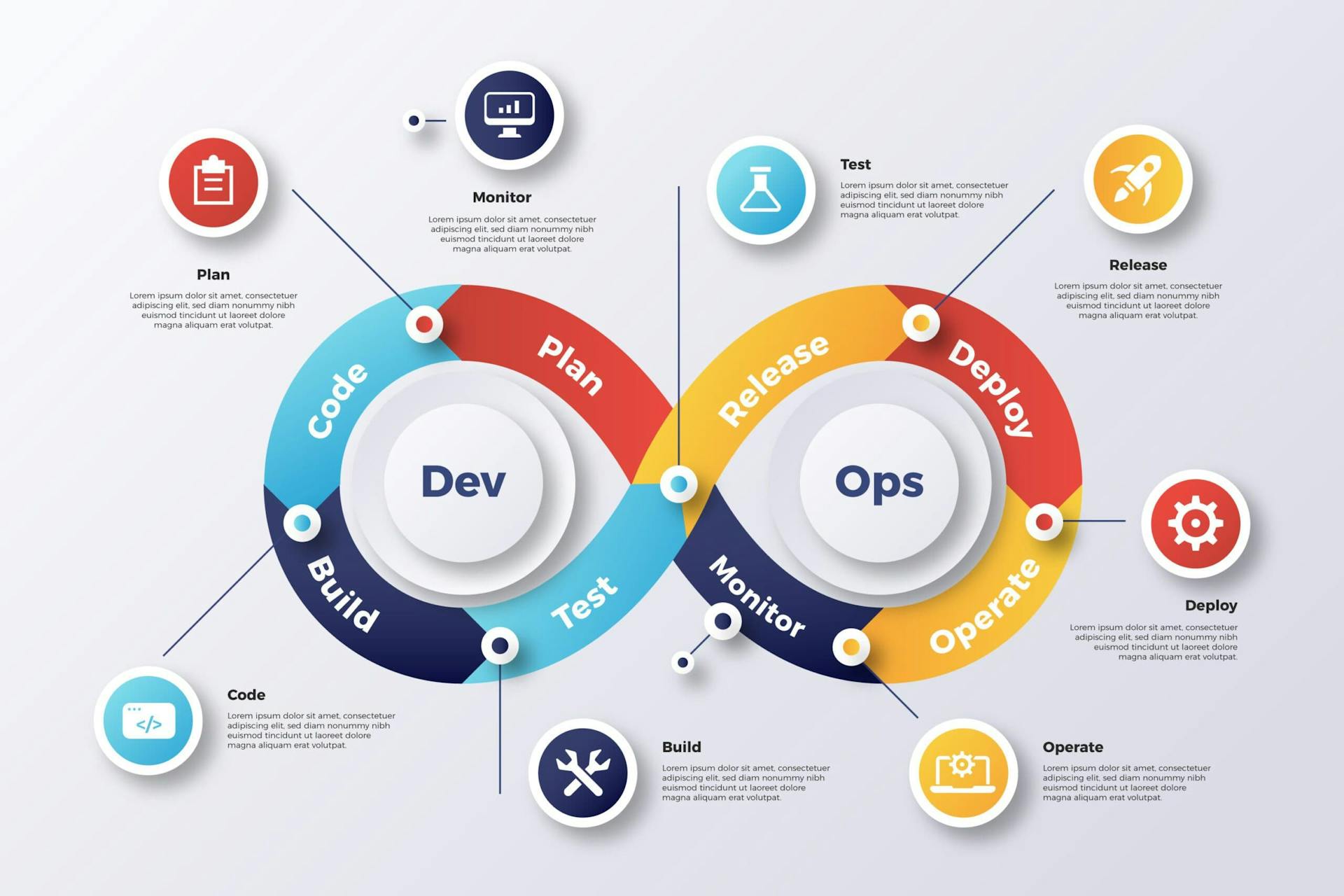GitOps vs DevOps- Understanding the Core Differences
Tasrie IT Services

In the rapidly evolving world of software development, two terms have gained significant attention: DevOps and GitOps. Both concepts aim to streamline the software development lifecycle and enhance collaboration between development and operations teams. However, understanding the nuances and distinctions between these methodologies is crucial for organizations seeking to optimize their software delivery processes. In this article, we will delve into the core differences between DevOps and GitOps, highlighting their unique characteristics, workflows, and benefits.
DevOps: Bridging the Gap between Development and Operations
DevOps, short for Development and Operations, is an approach that emphasizes close collaboration and integration between software developers and IT operations professionals. It promotes a culture of shared responsibility and aims to break down the traditional silos between these two teams.
Key Principles of DevOps
DevOps is built upon several fundamental principles, including:
-
Continuous Integration and Continuous Delivery (CI/CD): DevOps emphasizes the frequent integration of code changes and the automated delivery of software updates, ensuring faster and more reliable deployments.
-
Automation: By automating repetitive tasks, such as testing, deployment, and infrastructure provisioning, DevOps reduces manual errors and accelerates the software delivery process.
-
Infrastructure as Code (IaC): DevOps encourages the use of infrastructure as code, enabling teams to define and manage their infrastructure using version-controlled files, such as YAML or JSON. This approach enhances reproducibility and scalability.
DevOps Workflow
The DevOps workflow typically encompasses the following stages:
-
Planning and Development: Developers collaborate to write code, while utilizing version control systems like Git to manage code repositories and track changes.
-
Continuous Integration: Developers integrate their code changes into a shared repository, triggering automated tests and code quality checks.
-
Continuous Delivery/Deployment: The integrated code is automatically built, tested, and deployed to different environments, such as development, staging, and production.
-
Monitoring and Feedback: Continuous monitoring helps identify issues and collect feedback from users, enabling teams to iterate and improve their software rapidly.
GitOps: Leveraging Git for Operations
GitOps, a relatively newer approach, revolves around leveraging Git as a single source of truth for both infrastructure and application configurations. It extends the benefits of version control and collaboration to the entire operations lifecycle.
Key Principles of GitOps
GitOps is grounded in the following key principles:
-
Declarative Infrastructure: With GitOps, the desired state of the infrastructure is described declaratively using version-controlled files. Any changes made to the infrastructure are applied by GitOps controllers, ensuring convergence with the desired state.
-
Pull-Based Continuous Deployment: GitOps relies on a pull-based deployment model, where the infrastructure continuously monitors the Git repository for changes. When a change is detected, the infrastructure automatically applies those changes, ensuring a consistent state.
-
Observability and Auditability: GitOps emphasizes observability and auditability by providing a clear history of all changes made to the infrastructure, enabling easy rollback, audit trails, and compliance.
GitOps Workflow
The GitOps workflow typically involves the following stages:
-
Infrastructure Configuration: Infrastructure is defined using version-controlled files, such as YAML or Helm charts, stored in a Git repository.
-
Pull-Based Deployment: The GitOps operator continuously monitors the repository and applies any changes to the infrastructure. This ensures that the deployed infrastructure always matches the desired state described in Git.
-
Automated Rollbacks and Recovery: In case of failures or undesired changes, GitOps allows for seamless rollbacks to a known good state. This reduces downtime and ensures system stability.
Key Differences: DevOps vs. GitOps
While DevOps and GitOps share the common goal of streamlining software delivery, there are notable differences between these two methodologies. Let's explore some of the key distinctions:
-
Operational Focus: DevOps primarily focuses on collaboration between development and operations teams, aiming to align their workflows and improve overall efficiency. GitOps, on the other hand, puts a stronger emphasis on using Git as the single source of truth for infrastructure and application configurations.
-
Change Management: In DevOps, changes to the infrastructure and application configurations can occur through multiple channels, such as manual changes or scripts. GitOps, however, promotes a Git-centric approach, where all changes must be made through the Git repository, ensuring version control and auditability.
-
Deployment Model: DevOps allows for various deployment models, including push-based and agent-based deployments. GitOps, in contrast, follows a pull-based deployment model, where the infrastructure continuously pulls changes from the Git repository and applies them automatically.
-
Tooling and Ecosystem: DevOps has a broader set of tooling options and a more mature ecosystem. GitOps, being a relatively newer concept, has a growing set of specialized tools and frameworks specifically designed for managing infrastructure using Git.
To visualize the differences between DevOps and GitOps, we can represent it in a diagram using the Mermaid syntax:

Conclusion
In conclusion, both DevOps and GitOps offer valuable approaches to streamline software development and operations. While DevOps emphasizes collaboration and automation across development and operations teams, GitOps leverages Git as a single source of truth for managing infrastructure configurations. Understanding the differences between these methodologies is crucial for organizations seeking to optimize their software delivery processes and make informed decisions about which approach aligns best with their needs. By implementing the right methodology and leveraging the associated tooling, organizations can achieve faster, more reliable, and scalable software deployments, ultimately driving innovation and competitiveness in today's dynamic market.
Remember, while understanding the differences between DevOps and GitOps is essential, implementing best practices tailored to your specific context is equally important. Continuously adapt and refine your processes to ensure optimal outcomes in your software development and operations endeavors.



